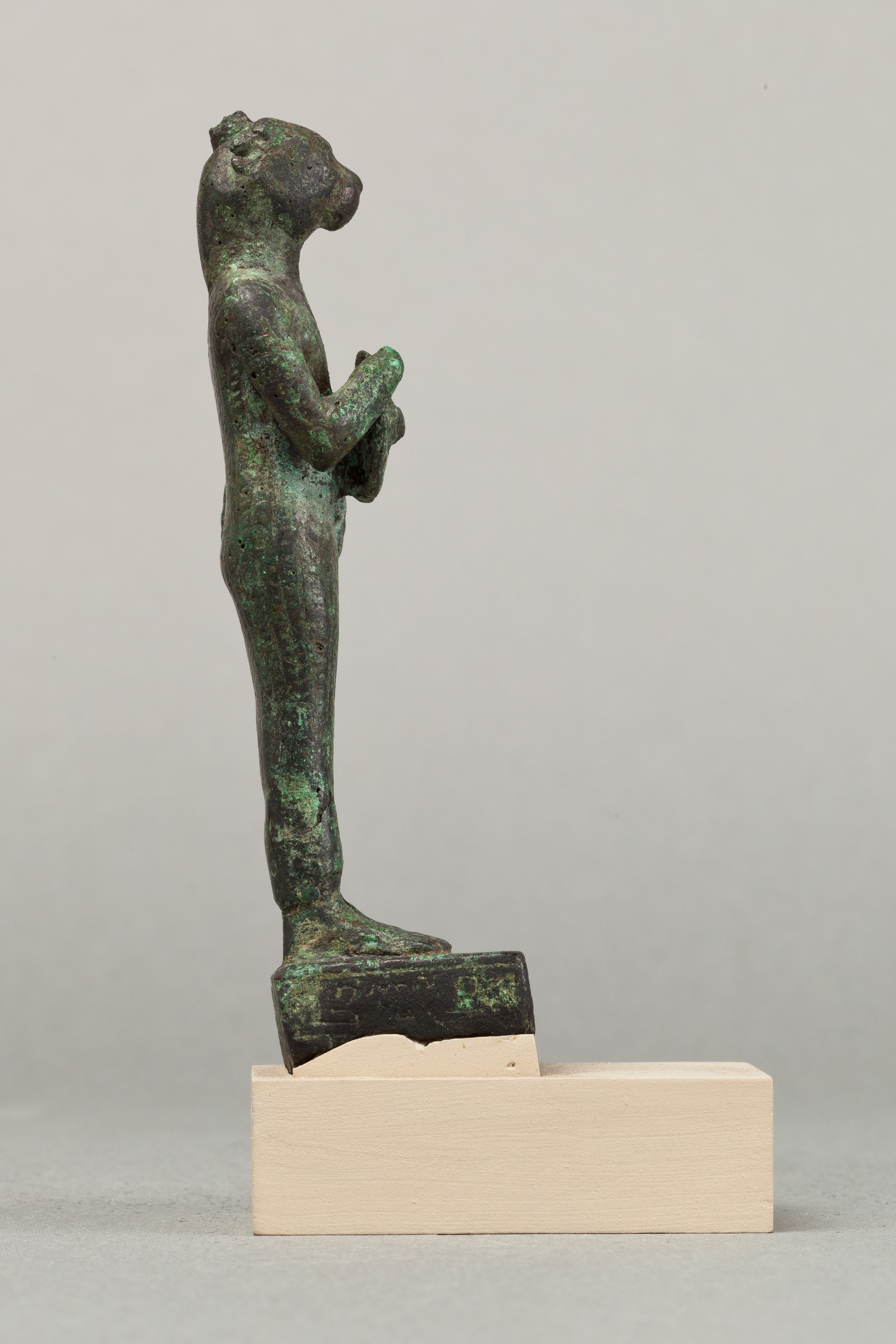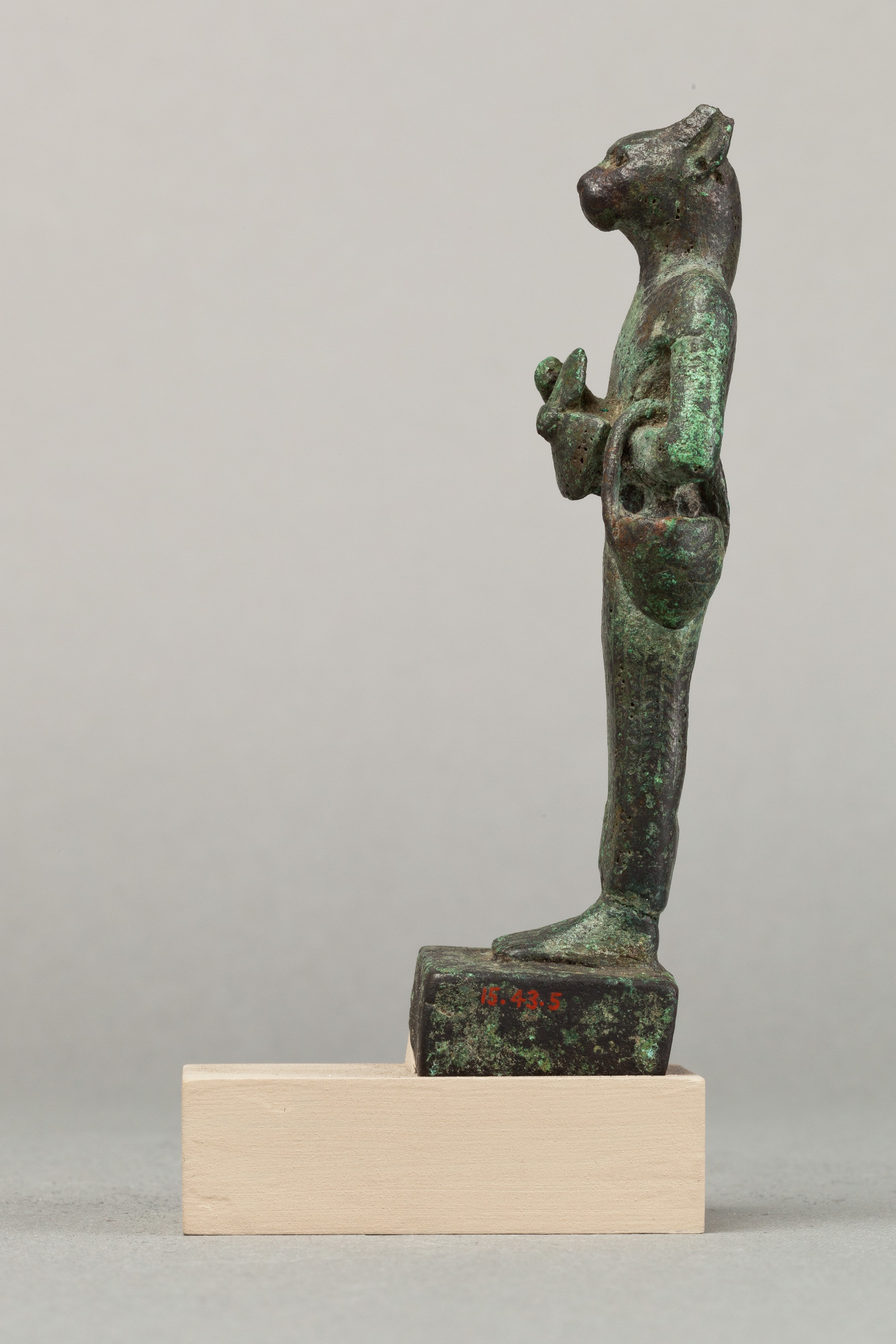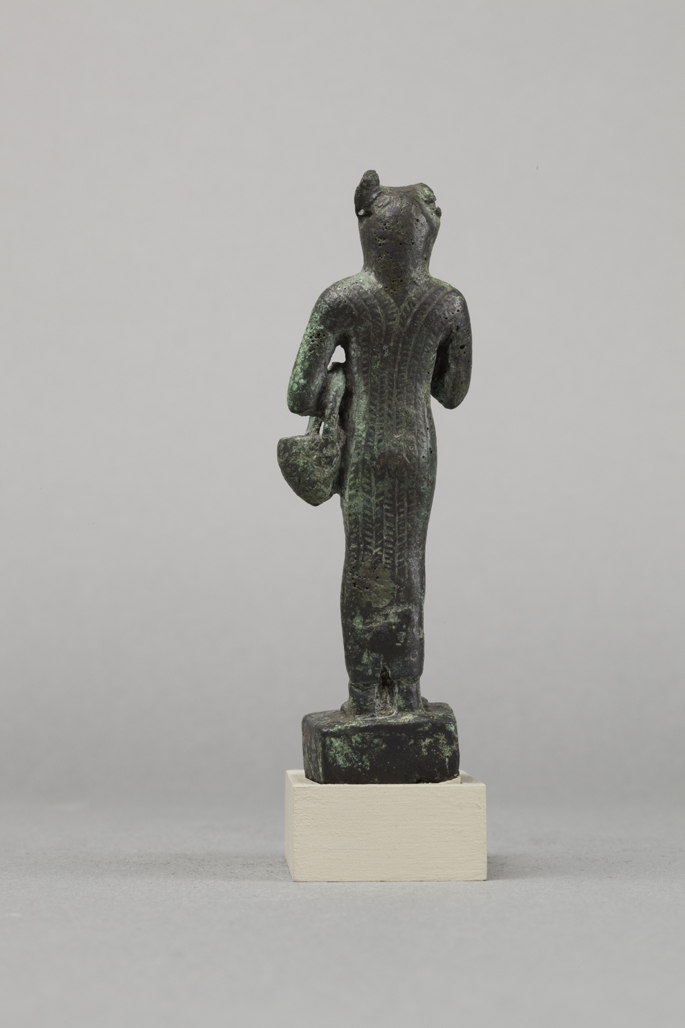Bastet with lion-headed aegis and basket
Late Period–Ptolemaic Period
Not on view
Bastet, here shown as a cat-headed goddess, was a powerful protective figure who also was known for her fertility. She could be represented with a lion head as well, but as a cat-headed goddess her peaceful traits were emphasized. Her personal adornments and garments are elaborate on statuettes, often more so than other goddesses, and she usually carries numerous attributes. This figure holds a protective lion-headed aegis and probably once held a sistrum in her other hand. She carries a basket on her other arm. A suggestion that the basket held kittens seems unfounded, but statuettes of this type do sometimes show the goddess with kittens in front of her, alluding to her fertility. In addition to her many attributes, her ears are pierced for earrings, probably gold originally, and her dress has a complex herring-bone pattern. Bastet does not always wear a decorated dress, but it is much more common for her than for other goddesses. The patterning highlights its intricacy and quality; also, as some have suggested, the vertical banding may recall the striped fur of a cat. A worn inscription on the base names the goddess.
Bastet’s main cult center was at Bubastis in the Delta, where thousands of cat mummies and a large number of cat statuettes were discovered. Her cult extended far beyond Bubastis, however, and statuettes of this goddess, as a cat or cat-headed, were among some of the most popular dedications of the Late and Ptolemaic Periods.
Due to rights restrictions, this image cannot be enlarged, viewed at full screen, or downloaded.
This artwork is meant to be viewed from right to left. Scroll left to view more.







